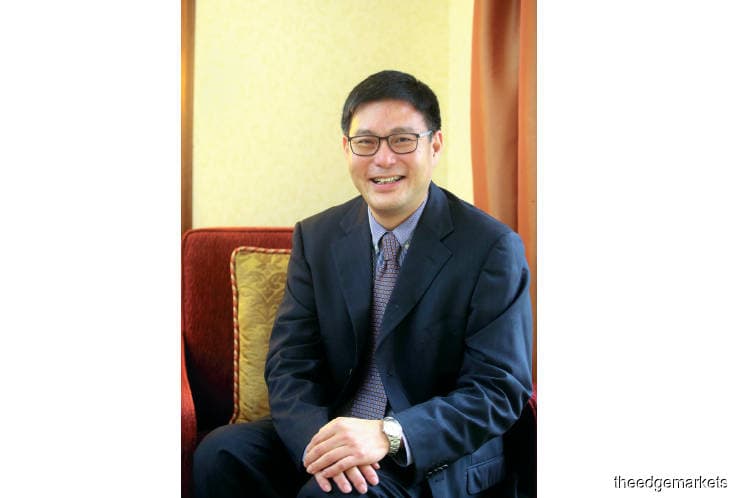
This article first appeared in The Edge Malaysia Weekly on April 22, 2019 - April 28, 2019
CHINA, the world’s largest automotive market, experienced its first contraction in vehicle demand in almost two decades last year as sales slipped 2.8% year on year to 28.08 million units, due to slowing economic growth and trade tensions with the US.
Although China is D&O Green Technologies Bhd’s largest export market accounting for about 45% of revenue, the company remains unfazed.
“Yes, China is our largest export market, but the prime drivers for demand of our products is not so much the growth in car sales, but rather the increased adoption of LED for interior and exterior [automotive] lighting,” D&O non-executive director Yeow See Yuen tells The Edge in an interview.
D&O’s operating subsidiary Dominant Opto Technologies Sdn Bhd is one of the world’s leading surface mount LED manufacturers for the global automotive industry. Its in-house branded Dominant has an estimated global market share of 5%.
“The application of LEDs for interior lighting has been growing because of new applications. Cars today use more lighting for aesthetic purposes such as for [ambient] lighting and infotainment systems. As for the exterior, this comes from the conversion to LED, from bulbs, for tail lights, headlights and indicator lights,” Yeow says.
LED usage has been growing as newer applications are introduced in vehicles.
“For example, let’s say that in the past, they used 50 LEDs for the interior. Today, this has gradually grown to about 80 LEDS per car and, moving forward, that trend is expected to continue.
“Although there was a slowdown in car sales towards the second half of last year, which persisted into this year as well, the overall demand for LEDs is still expected to be relatively healthy,” Yeow says.
Nevertheless, the group is aware of the headwinds that declining car sales bring.
“Automotive companies were unprepared for the sharp decline in sales, and thus every level of the supply chain had to adjust their inventory levels as they were holding on to a high level of buffer stocks.
“For an upstream producer like us, it was a double whammy as car sales dropped. Secondly, our customers, who are module makers, had to adjust down their inventory holdings in order to normalise to that kind of car sales [level] moving forward.
“Meanwhile, we believe that the long-term [growth] trend [for automotive LEDs] is still intact. We just have to keep our costs as lean as possible, adjust our purchases and production, and try to weather through what we call a short-term blip,” he explains.
The group will ramp up production of smart LEDs, given that some automotive companies are looking to commercialise autonomous, or self-driving cars, as early as 2022.
“That [the autonomous driving trend] has got an impact on demand for smart LEDs and LEDs in general as cars will become more interactive. The design concept has moved to more aesthetics rather than functionality, and all this requires a light source. For example, when autonomous driving rolls out, you can programme your destination and watch television in the car,” says Yeow.
However, it will be long before car companies adopt new LED products for their commercial production.
“There is quite a long lead time to commercial production because you have to first sell this concept to customers, then if they like it, they will have to evaluate the product for future models. When they do place orders, it is not for today but three years down the road when they launch the car that we designed the product for.”
Yeow says the group expects to start production of smart LED towards the year end.
For the financial year ended Dec 31, 2018, the group charted a near 6% y-o-y rise in revenue to RM490.78 million.
Its net profit grew by a stunning 60.8% to RM35.96 million, underpinned by gross margin improvements and a slower rate of increase in operating expenses.
“We think that the first two quarters of this year will be weak in terms of top line but we are hoping for things to pick up in the second half. Last year was the first in many years that global car sales declined, and this year, we think the growth would be flat,” Yeow says.
Although he acknowledges the challenges ahead, he believes it does not change the long-term outlook for the industry because of the trend towards concepts that focus on comfort and aesthetics.
Like most industry players, D&O is hoping for a swift close to the protracted US-China trade war.
“China will continue to be a huge automotive market despite the recent hiccup. We think growth will normalise once the trade tensions and consumer sentiment improves,” Yeow says. He adds that a trade deal in itself will not affect D&O’s sales but will help to clear market uncertainties, given fears of a global recession.
D&O shares surged to a record high of 99.3 sen on Oct 4 last year, shortly after Kumpulan Wang Persaraan (Diperbadankan) (KWAP) emerged as a substantial shareholder. KWAP which held a 5.3% stake in D&O has since ceased to be a substantial shareholder as of February. Savvy businessman Goh Nan Kioh is D&O’s largest shareholder with a 36.45% stake.
From an investment perspective, two-thirds of research firms covering the stock have a “buy” call, with target prices ranging from 86 sen to 96 sen, an upside of 30% to 45% to D&O’s closing price of 66 sen last Thursday. The group is valued at RM731 million.
Save by subscribing to us for your print and/or digital copy.
P/S: The Edge is also available on Apple's AppStore and Androids' Google Play.